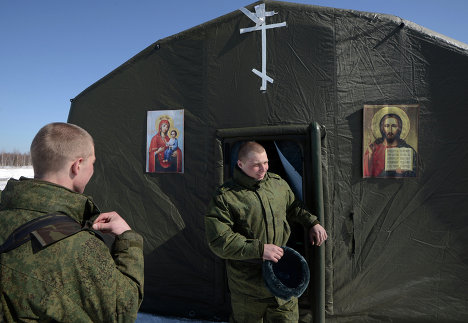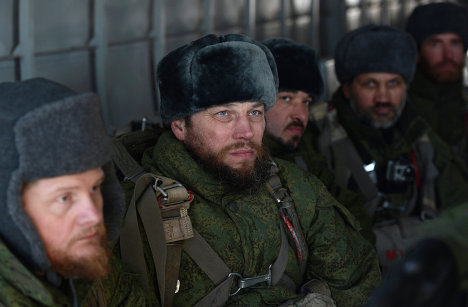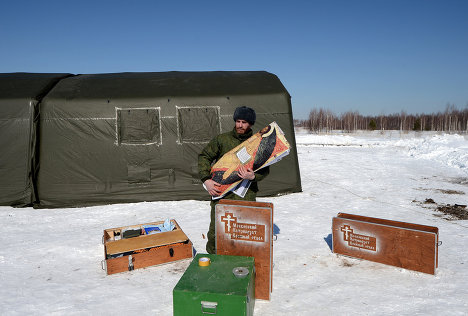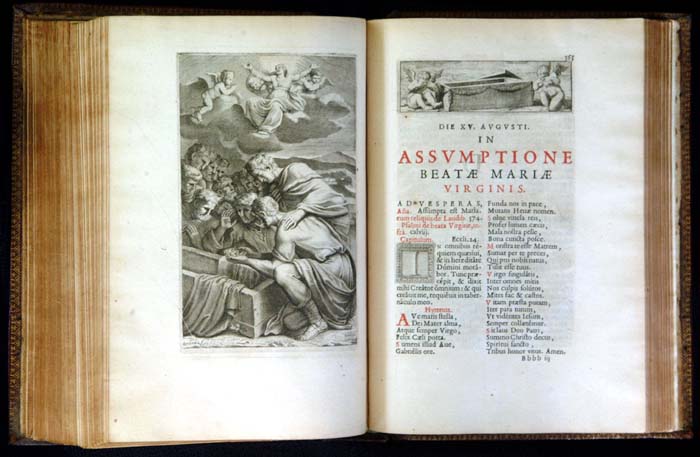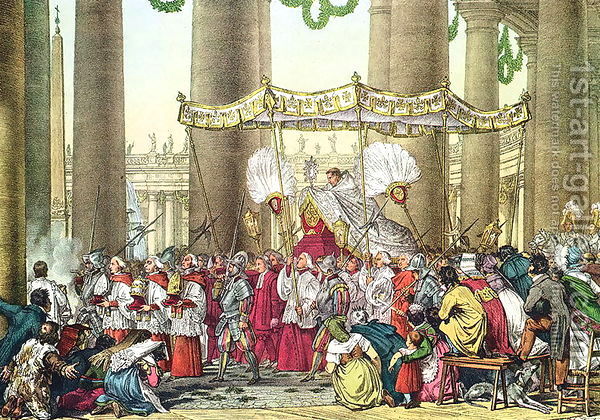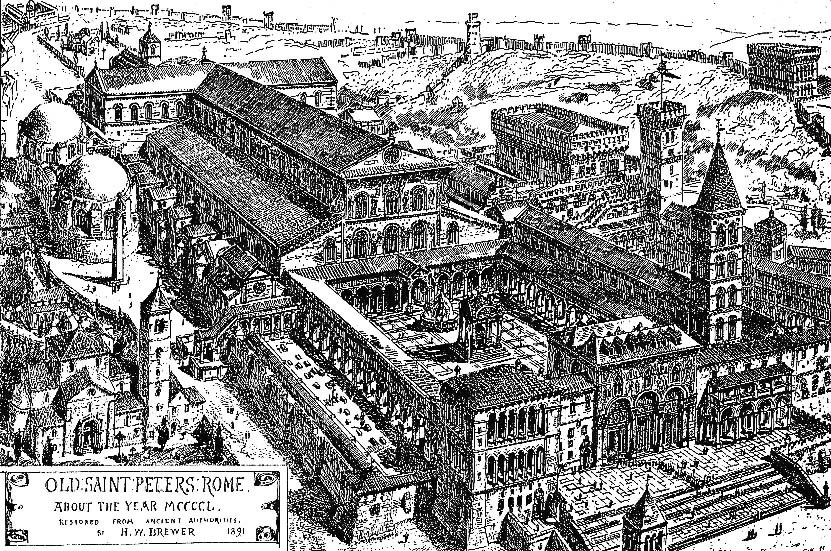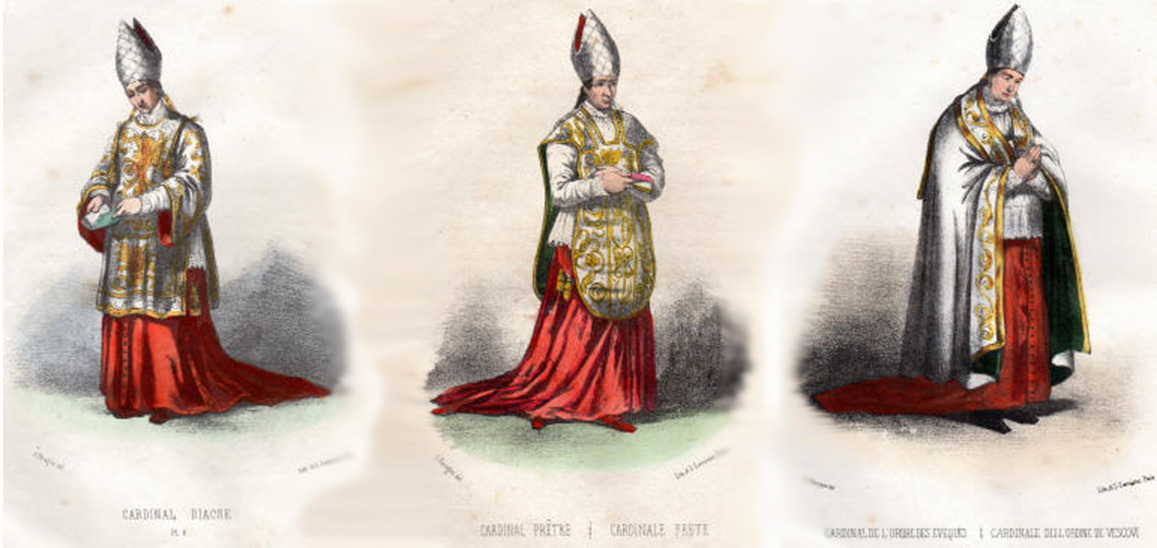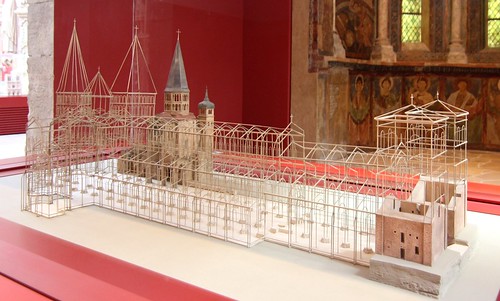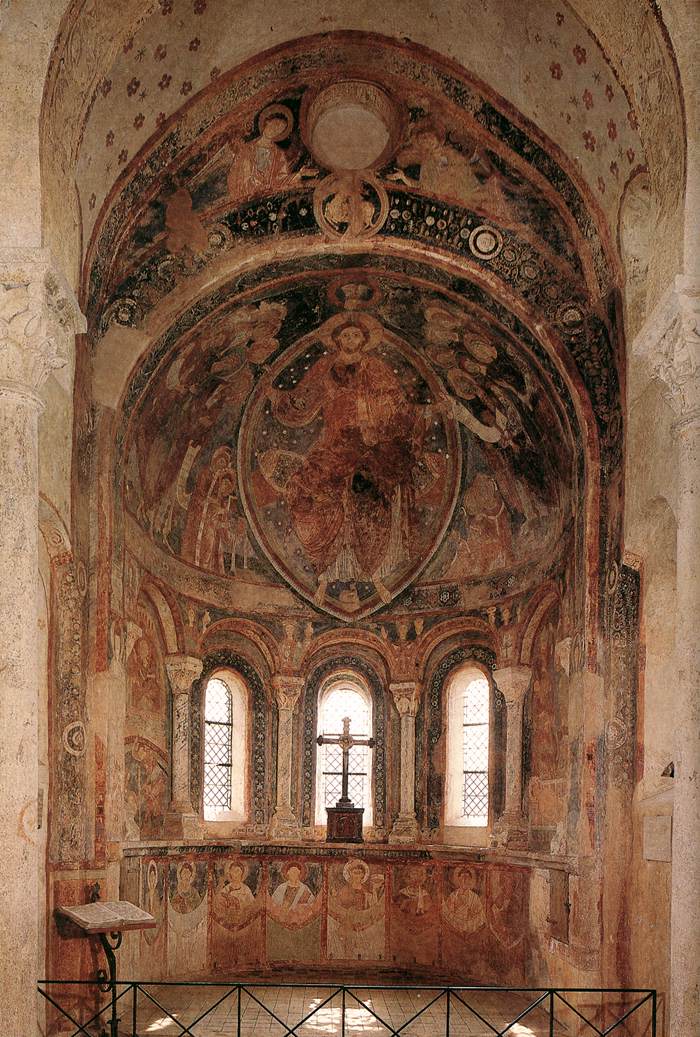A constant theme of Benedict XVI's papacy was that the teachings and practices of the Church after Vatican II are congruent in quality and meaning to those that preceded the Council. When this idea was first floated around 2005 many, myself included, assumed this meant a concerted effort to create some continuity between 2005 and 1905. Instead, it seems to be to assume continuity and move on to some other topic of discussion. That is fine for most things, but occasionally one finds points of inquiry that one cannot ignore.
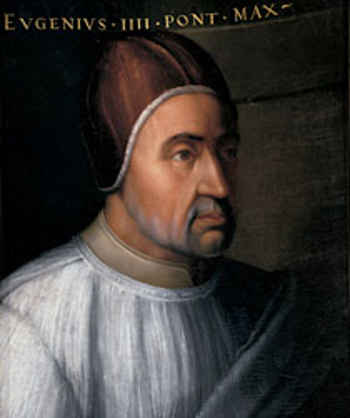 |
| Pope Eugene IV, author of Cantate Domino |
Recently I have been thinking about one in particular: the teaching "Outside the Church there is no salvation." No one is going to suggest for a moment that the Second Vatican Council, Paul VI, John Paul II, or Benedict XVI repudiated this doctrine. Indeed, many hold it to be still on the books. One only needs a particular understanding of what the Church is. Here is where my curiosity enters. We will quickly consider the Church's teaching in three eras:
the high Middle Ages
the 19th and early 20th centuries
the pontificate of Pius XII through modern day
The first era's teachings are brutally clear, almost depressingly so. Boniface VIII's bull Unam Sanctam is a forthright contention that unless one is politically and religiously subject to the Roman See, then that soul is damned. Eugene IV's Cantate Domino speaks more generally about being in communion with the Apostolic See, in the context of attempted reunion with the Coptic Orthodox Church (non-Chalcedonian). Cantate Domino states that all Jews, pagans, heretics, schismatics, and un-baptized will go to hell, although with differing degrees of punishment. Limbo, in my opinion, was an emotional and intellectual hypothesis to fill the void created by this teaching. We can give political and era-based context to these bulls, but that cannot alter their meaning. Indeed, they use such unequivocal language that one cannot for a moment be confused as to what their writers intended to say:
"It firmly believes, professes, and proclaims that those not living within the Catholic Church, not only pagans, but also Jews and heretics and schismatics cannot become participants in eternal life, but will depart “into everlasting fire which was prepared for the devil and his angels” [Matt. 25:41], unless before the end of life the same have been added to the flock; and that the unity of the ecclesiastical body is so strong that only to those remaining in it are the sacraments of the Church of benefit for salvation, and do fastings, almsgiving, and other functions of piety and exercises of Christian service produce eternal reward, and that no one, whatever almsgiving he has practiced, even if he has shed blood for the name of Christ, can be saved, unless he has remained in the bosom and unity of the Catholic Church."—Cantate Domino, Eugene IV
Going forward several centuries, we enter the time of Pius IX and St. Pius X. These two pontiffs in particular stated that while the Catholic Church is the means of salvation, God could save a person living in ignorance of the Truth out of His kindness:
"If he is outside the Church through no fault of his, that is, if he is in good faith, and if he has received Baptism, or at least has the implicit desire of Baptism; and if, moreover, he sincerely seeks the truth and does God's will as best he can such a man is indeed separated from the body of the Church, but is united to the soul of the Church and consequently is on the way of salvation."—Catechism of Pius X, Question 29
I do not find this in conflict with the medieval teaching, as the discovery of the New World created a shock to the theological system. Surely God would not damn souls for not knowing of the Church? He could, in His kindness, save those who seek Him and who wish to live morally upstanding lives.
 |
Pope Pius XII, who gave the world
Mystici Corporis |
Just a few decades later, when Pius XII issues Mystici Corporis, things begin to take on a new light. Despite writing Humani Generis, which implicitly condemned some propositions of Fr. Karl Rahner SJ, Pius XII seems to have accepted the idea that one could be an anonymous Christian in some sense. The Church, suggests the encyclical, is not just the Body of Christ, but the Mystical Body of Christ. One could be a member of the Church without having been formally initiated, perhaps by baptism of desire or, imperfectly, by taking Sacraments from Orthodox or protestant churches. Many traditionalists are very fond of Pius XII and recall this elegant understanding of other religions with joy, but do they realize how new an idea it was? Pius X's concept involved God saving someone who could not access the Church. Pius XII's concept was that such a person could already be part of the Church! This teaching became the basis of the Second Vatican Council's Lumen Gentium, which dealt extensively with other religions.
Here we have three ideas:
Anyone who is not a member of the institutional Church goes to hell
God might save persons who are outside the institutional Church, if they are separated through no personal fault
Those outside the institutional Church might already be part of the Mystical Body of Christ, the actual Church, and could possibly obtain salvation this way
Ideas one and two seem fairly consistent with each other. Number three is internally consistent, but does it "jive" with one and two? A quick Google search will bring the inquirer to a plethora of apologists who say the living Magisterium gets to decide and that, since Lumen Gentium, the Magisterium has decided the value of the medieval documents survives, but is modified and clarified based on one's understanding of the "Church" a la Pius XII. Was there even a formal field of ecclesiology before Pius XII? Probably, but Papa Pacelli's delineation would have been considered worthy of attention in earlier days. Most difficult, for a former student of medieval history, is that for this particular spin to be true, Boniface VIII and Eugene IV's bulls would have to mean something other than what they were clearly supposed to mean. Maybe a historical investigation would show "Outside the Roman communion there is no salvation" did not have much traction in earlier times, which would make such a teaching illegitimate and non-binding. Then again, could not the same be done for Mystici Corporis?
The purpose in asking these questions is not to publicly doubt the Church. On the contrary, the necessity of communion with the entire Church is a point in need of vital clarification, clarification that has been long overlooked. Perhaps a future Pontiff or movement of theologians will view this particular point as an opportunity to exercise Benedict XVI's hermeneutic of continuity in a lasting way.... Or maybe I am just way off track....
P/S: I am not a Feeneyite

 My friend and I were discussing the madness that is psychiatry, as opposed to psychology, which is a serious field of study. We debated if you could quantify Sigmund Freud's theories, as you can quantify any serious scientific theory. For those unaware, Freud formulated his theories based on his time working as a shrink/earpiece for sexually deprived, upper-class Austrian housewives (for whom Freud commonly prescribed cocaine). Hardly a reasonable sample size. The "control group" for experimenting with Freud's theories would be the rest of the human population. My friend and I concluded that were one to create a controlled study and run a regression to test Freud's theory Oedipus theory, one would find that after accounting for socioeconomic status, for cocaine use, and for boredom, the coefficient on Sexual Yearning for One's Mother is zero. Neither positive, nor negative. A big fat zero. No impact, up or down. It is nonsense and does not exist—except for perhaps a few very unusual individuals.
My friend and I were discussing the madness that is psychiatry, as opposed to psychology, which is a serious field of study. We debated if you could quantify Sigmund Freud's theories, as you can quantify any serious scientific theory. For those unaware, Freud formulated his theories based on his time working as a shrink/earpiece for sexually deprived, upper-class Austrian housewives (for whom Freud commonly prescribed cocaine). Hardly a reasonable sample size. The "control group" for experimenting with Freud's theories would be the rest of the human population. My friend and I concluded that were one to create a controlled study and run a regression to test Freud's theory Oedipus theory, one would find that after accounting for socioeconomic status, for cocaine use, and for boredom, the coefficient on Sexual Yearning for One's Mother is zero. Neither positive, nor negative. A big fat zero. No impact, up or down. It is nonsense and does not exist—except for perhaps a few very unusual individuals..jpg)
